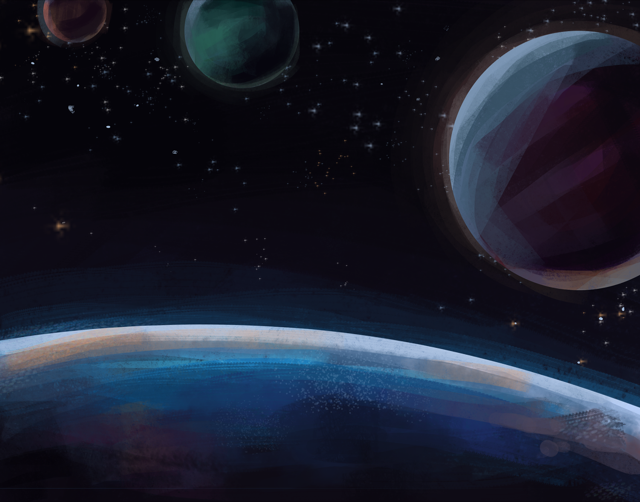The Exordium of Exoplanet Life
April 10, 2017
The popular band EXO claims its members descended from an unknown celestial body before their debut in 2012, bringing chart-topping songs and aesthetically pleasing music videos to the people of planet Earth. While people ridiculed this as an implausible marketing scheme, NASA’s recent discovery of a solar system with seven exoplanets may change their minds.
On February 22, 2017, astronomers discovered a solar system with planets similar in size to Earth only 40 light-years away — one of the closest systems ever recorded. The exoplanets orbit the dwarf star Trappist-1, which was named for the telescope used to monitor it. Although scientists have discovered other planets in the past, this system is differentiated from the others by the fact that it has water. With water comes the possibility of life, a prospect that sent astronomers into a frenzy. If researchers can monitor the creation of gases and the plausible conception of life on the newfound planets, alien worlds emerge as a very possible reality.
What enables this solar system to have the ingredients for life? Trappist-1 is a cool red dwarf star; it is smaller in size and emits much less heat compared to the sun. Even though the exoplanets have a much shorter orbit around Trappist-1 (the longest being 20 days), Trappist-1’s mild temperature could allow for life to flourish. Through orbit patterns, scientists also discerned that the planets are about 75 percent the size of Earth. If they detect oxygen, the probability of life on these planets increases dramatically.
The public seems excited as well; even though colonization of these planets is impossible right now considering the distance, many hold onto fantasies of discovering alien life. Sneha Hariharan ‘19 notes that “It’s really lucky how [scientists] discovered a solar system with conditions similar to ours… Hey, you never know what you’ll find; if the systems are that similar, there’s probably life.” Indeed, from the planets’ sizes to the chemical composition of the atmospheres, the Trappist-1 system mirrors Earth’s solar system.
Public interest in this discovery has also led to a revitalization of NASA. NASA’s space conservatories like the Goddard Institute in New York City and the SETI Institute in California are using radio technology and monitoring existing telescopes closely to determine the gas composition in this exoplanet system.
Sreekar Madabushi ‘20 muses that “It is evident that NASA’s new technologies such as the Jones Webb telescope and their Kepler Telescope are projects that need to continue to be funded because of their world-changing discoveries.” Many scientists hope that the public will lobby for increased funding for NASA to develop better space exploration tools.
High school students in particular have little exposure to astronomy, with the main scientific focuses being biology, chemistry, and physics. Even Ridge High does not offer astronomy classes for its students. This novel discovery could bring more awareness of our universe to students and give schools a stronger incentive to incorporate astronomy units or curricula into classes. Although rocket science is often seen as the most difficult scientific field to master, the Trappist-1 system could erase this stigma by refueling interest amongst scholars.
Astrobiologists especially see a plethora of opportunities in these exoplanets, and are currently trying to simulate similar atmospheric and geological conditions to determine the possibility of life. In the past, astronomers have used radio signals to “pick up on” alien civilizations. Now, NASA has a model on which to base its calculations and projects. Although interest in NASA has been slowly decreasing, scientists view this discovery as a justification to continue space expeditions. Although people have denounced astronomers before for having their heads in the clouds, finding alien life, out in the improbable field of space, is more than a miracle now — it’s just the exordium of the world’s fascination with the unknown.




Lucy Wei • Feb 26, 2018 at 1:32 pm
Love it! It really speaks to me.
Kaivu Hariharan • Feb 26, 2018 at 1:27 pm
Fascinating!
Ryan Amalfitano • Feb 26, 2018 at 11:30 am
There is more than one earth. Life exists on other planets in other galaxies
jasmin • Feb 26, 2018 at 11:06 am
This is article is really interesting; especially when discussing Astrobiologists and how they see a plethora of opportunities in these exoplanets, and are currently trying to simulate similar atmospheric and geological conditions to determine the possibility of life.